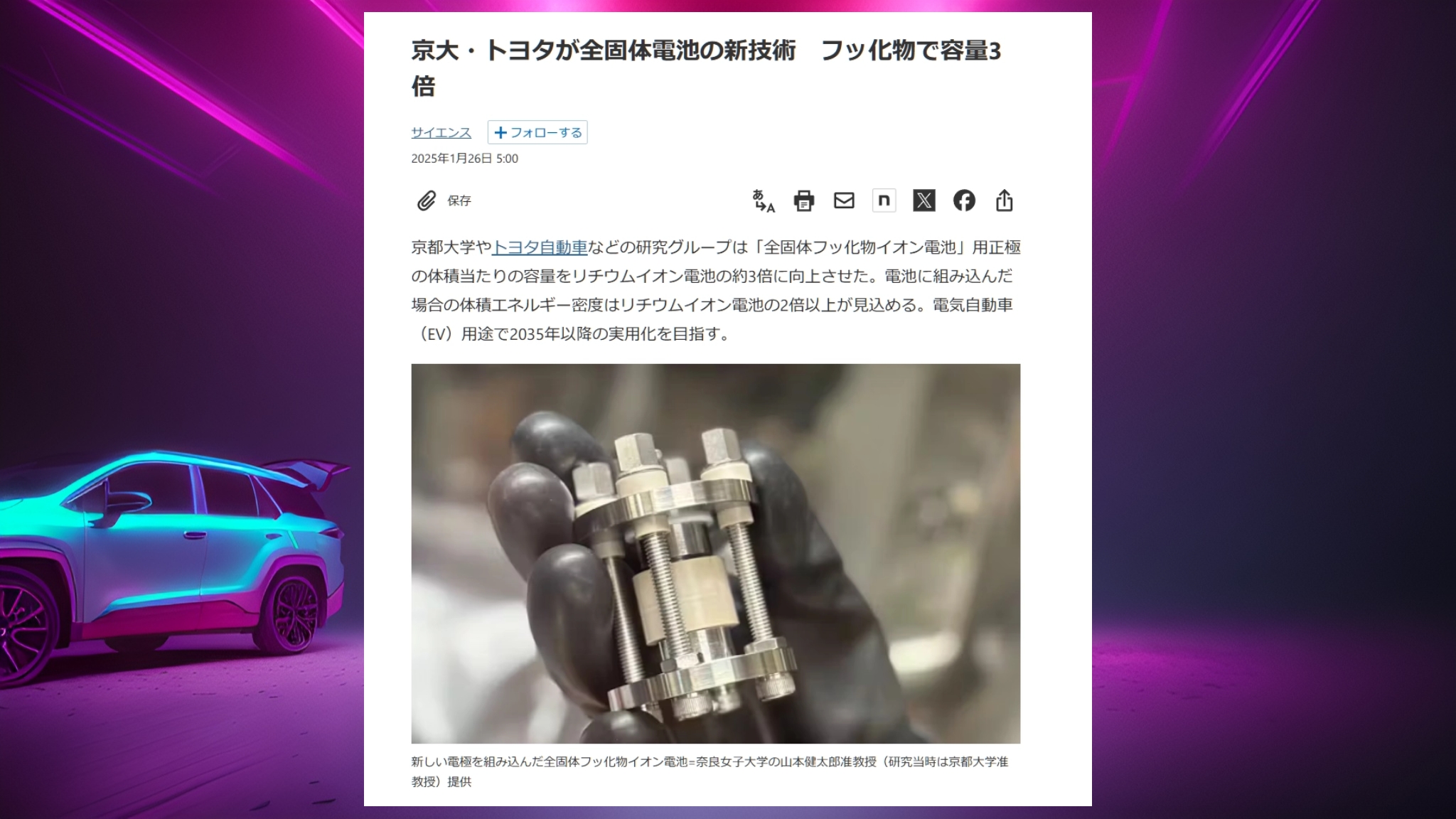Toyota, in cooperation with Kyoto University, has taken a pleasing step that will revolutionise the battery technology of the future. The new solid-state battery technology developed will be able to triple the capacity of existing lithium-ion batteries with the use of fluoride ions. So how is this possible? Details are in our news…
Toyota and Kyoto University to triple the capacity of lithium-ion batteries
Researchers from Kyoto University have developed a cathode material called ‘copper nitride’. This innovative material enables nitrogen atoms to react with fluoride ions, allowing each nitrogen atom to release three electrons. In other words, this technology can increase the volumetric capacity of batteries to three times that of lithium-ion batteries and double the capacity by weight.

Fluoride ions have a lighter structure compared to lithium ions. This makes the batteries more compact. It is also stated that thanks to fluoride ions, these new batteries not only have a higher energy density, but also a more environmentally friendly structure.
The new solid-state battery we mentioned can lead Toyota to the leadership in the electric vehicle market. Toyota is aware that long range and fast charging times are critical in electric vehicles. If this technology goes into mass production, Toyota’s vehicles will be able to travel longer distances, thereby reducing the dependence of electric vehicle users on charging stations.
Toyota has worked intensively on solid-state batteries in the past, but this new technology is also an opportunity to produce batteries at a lower cost. In particular, it is said that the use of fluoride instead of lithium can provide significant savings in production costs.

As you know, lithium ion batteries are generally unstable at high temperatures, which can create safety problems. However, the materials used in these new solid-state batteries can offer a safer use by increasing thermal stability.
By the way, let’s say that this new technology is still in the early development stage. However, with mass production, it will create a wide usage area from electric vehicles to portable devices. What do you think about this subject? You can write your opinions in the comments section below…














